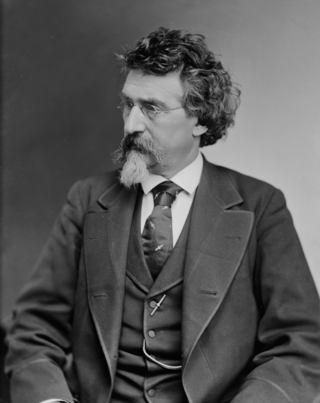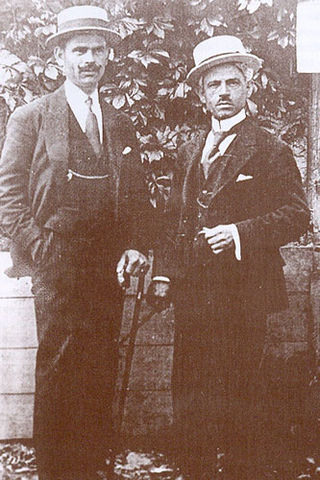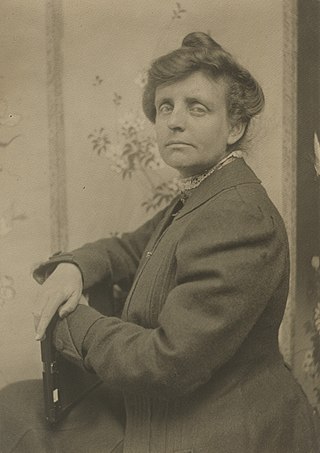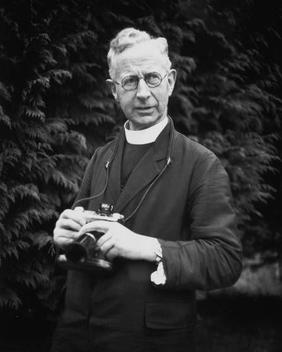
Elizabeth "Lee" Miller, Lady Penrose, was an American photographer and photojournalist. She was a fashion model in New York City in the 1920s before going to Paris, where she became a fashion and fine art photographer. During the Second World War, she was a war correspondent for Vogue, covering events such as the London Blitz, the liberation of Paris, and the concentration camps at Buchenwald and Dachau.

Robert Capa was a Hungarian–American war photographer and photojournalist. He is considered by some to be the greatest combat and adventure photographer in history.

The Daily Mirror is a British national daily tabloid newspaper. Founded in 1903, it is owned by parent company Reach plc. From 1985 to 1987, and from 1997 to 2002, the title on its masthead was simply The Mirror. It had an average daily print circulation of 716,923 in December 2016, dropping to 587,803 the following year. Its Sunday sister paper is the Sunday Mirror. Unlike other major British tabloids such as The Sun and the Daily Mail, the Mirror has no separate Scottish edition; this function is performed by the Daily Record and the Sunday Mail, which incorporate certain stories from the Mirror that are of Scottish significance.

Photojournalism is journalism that uses images to tell a news story. It usually only refers to still images, but can also refer to video used in broadcast journalism. Photojournalism is distinguished from other close branches of photography by having a rigid ethical framework which demands an honest but impartial approach that tells a story in strictly journalistic terms. Photojournalists contribute to the news media, and help communities connect with one other. They must be well-informed and knowledgeable, and are able to deliver news in a creative manner that is both informative and entertaining.

Mathew B. Brady was one of the earliest and most famous photographers in American history. Best known for his scenes of the Civil War, he studied under inventor Samuel Morse, who pioneered the daguerreotype technique in America. Brady opened his own studio in New York City in 1844, and photographed John Quincy Adams and Abraham Lincoln, among other public figures.

The American Civil War was the most widely covered conflict of the 19th century. The images would provide posterity with a comprehensive visual record of the war and its leading figures, and make a powerful impression on the populace. Something not generally known by the public is the fact that roughly 70% of the war's documentary photography was captured by the twin lenses of a stereo camera. The American Civil War was the first war in history whose intimate reality would be brought home to the public, not only in newspaper depictions, album cards and cartes-de-visite, but in a popular new 3D format called a "stereograph," "stereocard" or "stereoview." Millions of these cards were produced and purchased by a public eager to experience the nature of warfare in a whole new way.

Steve McCurry is an American photographer, freelancer, and photojournalist. His photo Afghan Girl, of a girl with piercing green eyes, has appeared on the cover of National Geographic several times. McCurry has photographed many assignments for National Geographic and has been a member of Magnum Photos since 1986.

Martine Franck was a British-Belgian documentary and portrait photographer. She was a member of Magnum Photos for over 32 years. Franck was the second wife of Henri Cartier-Bresson and co-founder and president of the Henri Cartier-Bresson Foundation.

War photography involves photographing armed conflict and its effects on people and places. Photographers who participate in this genre may find themselves placed in harm's way, and are sometimes killed trying to get their pictures out of the war arena.

The Manaki brothers, Yanaki and Milton, were photography and cinema pioneers of the Balkan Peninsula and the Ottoman Empire. They were the first to bring a film camera and create a motion picture in the city of Manastir, an economic and cultural center of Ottoman Rumelia. Their first film, The Weavers, was a 60-second documentary of their grandmother spinning and weaving; this is regarded as the first motion picture shot in the Balkans. The Manaki brothers used a 35 mm Urban Bioscope camera that Yanaki imported from London in 1905. Yanaki and Milton filmed documentaries about various aspects of life in the city of Manastir.
Jerome Zerbe was an American photographer. He was one of the originators of a genre of photography that is now common: celebrity paparazzi. Zerbe was a pioneer in the 1930s of shooting photographs of the famous at play and on-the-town. According to the cocktail recipe book Bottoms Up (1951), he is also credited with inventing the vodka martini.

Frances Benjamin Johnston was an early American photographer and photojournalist whose career lasted for almost half a century. She is most known for her portraits, images of southern architecture, and various photographic series featuring African Americans and Native Americans at the turn of the twentieth century.

John Deakin was an English photographer, best known for his work centred on members of Francis Bacon's Soho inner circle. Bacon based a number of famous paintings on photographs he commissioned from Deakin, including Portrait of Henrietta Moraes, Henrietta Moraes on a Bed and Three Studies of Lucian Freud.

Francis Patrick Mary Browne, was a distinguished Irish Jesuit and a prolific photographer. His best known photographs are those of the RMS Titanic and its passengers and crew taken shortly before its sinking in 1912. He was decorated as a military chaplain during the First World War.

Arthur (Usher) Fellig, known by his pseudonym Weegee, was a photographer and photojournalist, known for his stark black and white street photography in New York City.

SS Batavier V was a steam packet for the Batavier Line that sailed between Rotterdam and London for most of her career. The ship was built in 1897 by the Gourlay Brothers of Dundee. The Dutch ship could carry a limited amount of freight and up to 428 passengers. She was rebuilt in 1909 which increased her length by over 5 metres (16 ft).
Horace Walter Nicholls was an English photographer, notable as a war photographer during World War I.

Ernest Brooks was a British photographer, best known for his war photography from the First World War. He was the first official photographer to be appointed by the British military, and produced several thousand images between 1915 and 1918, more than a tenth of all British official photographs taken during the war. His work was often posed and formal, but several of his less conventional images are marked by a distinctive use of silhouette. Before and immediately after the war he worked as an official photographer to the Royal Family, but was dismissed from this appointment and stripped of his official honours in 1925, for reasons that were not officially made public.

Wait for Me, Daddy is a photo taken by Claude P. Dettloff on October 1, 1940, of The British Columbia Regiment marching down Eighth Street at the Columbia Street intersection, New Westminster, British Columbia. While Dettloff was taking the photo, Warren "Whitey" Bernard ran away from his mother to his father, Private Jack Bernard. The picture received extensive exposure and was used in war-bond drives.

Leonard Frank was a German-Canadian photographer known for commercial and industrial photography. First emigrating to San Francisco, two years later he made his way up the coast to eventually settle in the town of Alberni on Vancouver Island. The chance win of a camera in a raffle steered him towards a career in photography. He became especially noted for his logging and landscape views. In 1916 Frank relocated to Vancouver, where he established a successful commercial studio. Frank left behind a massive body of work, much of it found at the Alberni Valley Museum, the Jewish Historical Society of British Columbia, and the Vancouver Public Library.


















